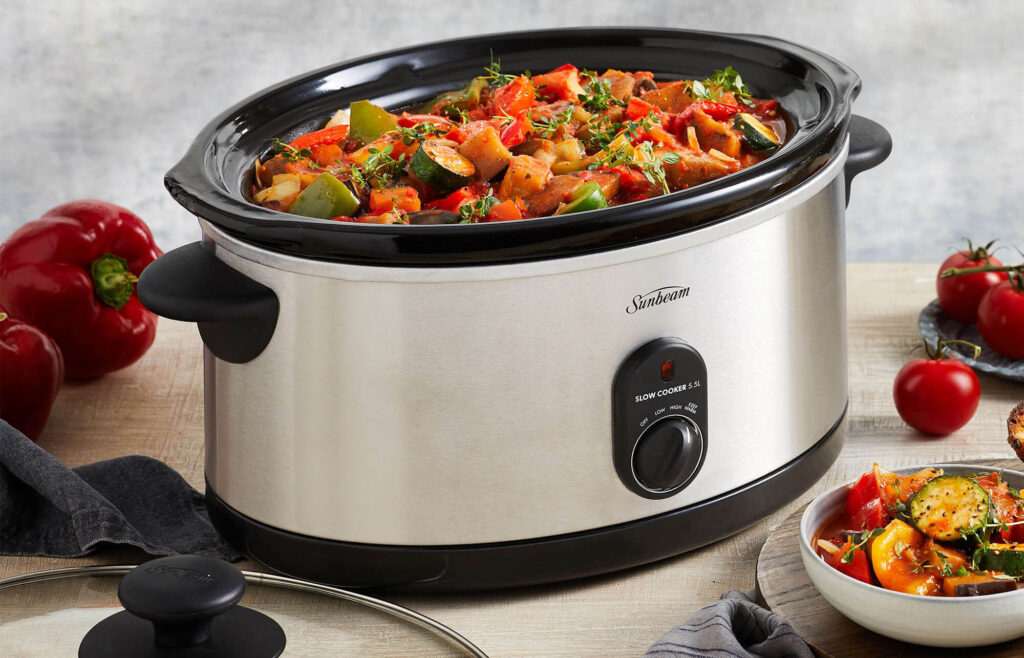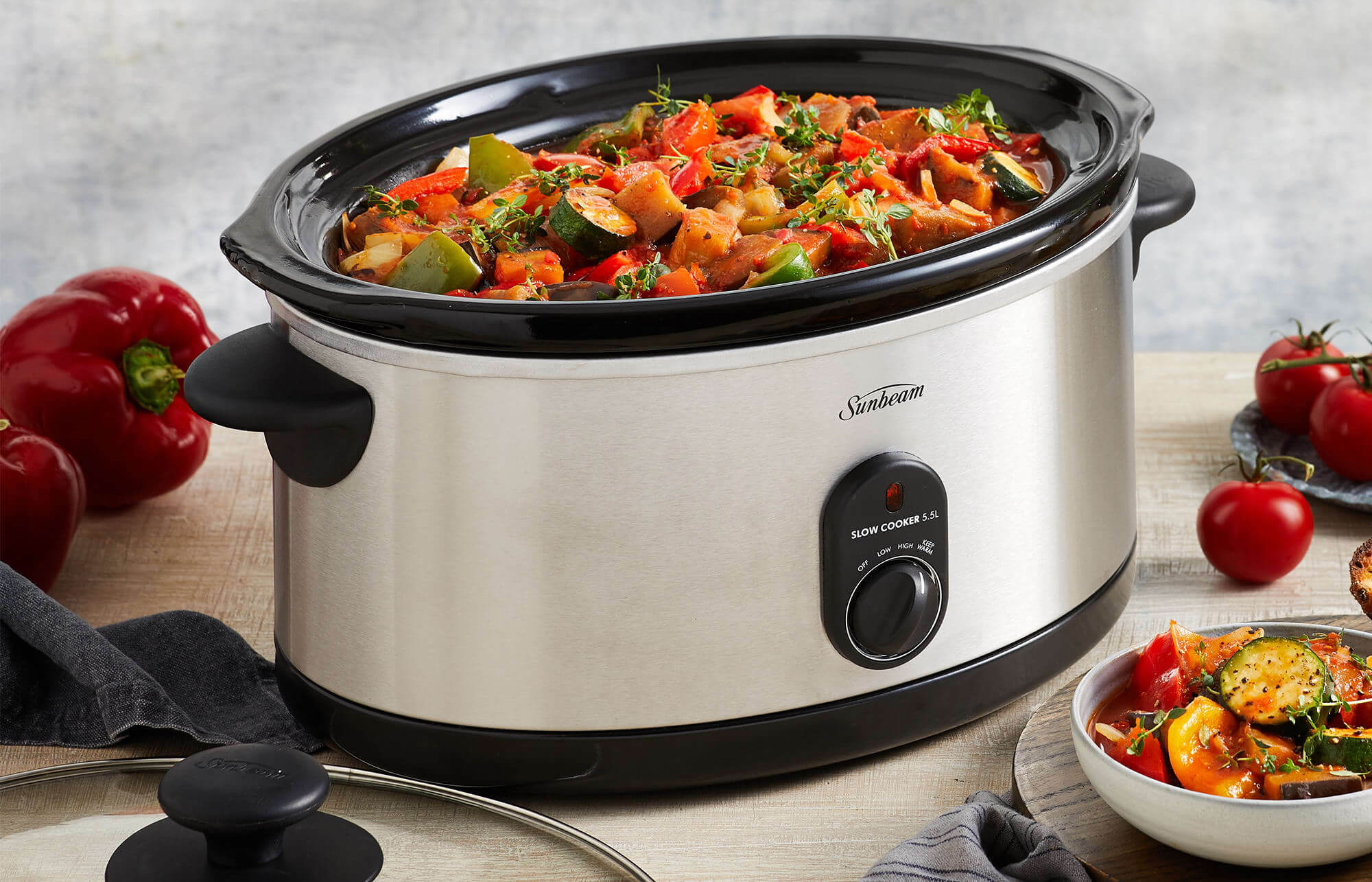
Unlocking Culinary Versatility: A Comprehensive Guide to Types of Slow Cookers
Slow cookers, also known as Crock-Pots (a popular brand name), have revolutionized home cooking by offering a convenient, hands-off approach to preparing delicious and nutritious meals. But beyond the basic concept of low-and-slow cooking, there lies a diverse landscape of slow cooker types, each designed with specific features and functionalities to cater to different culinary needs. Understanding the nuances of these various types of slow cookers is key to maximizing their potential and creating culinary masterpieces with minimal effort. This comprehensive guide delves deep into the world of slow cookers, exploring their various forms, features, and benefits, empowering you to make an informed decision and elevate your cooking experience.
Exploring the Landscape of Slow Cooker Varieties
The world of slow cookers extends far beyond the classic, basic model. From programmable options to multi-cookers with slow cooking capabilities, the choices can be overwhelming. Let’s break down the most common types of slow cookers and examine what makes each unique.
Traditional Slow Cookers: The Enduring Classic
The traditional slow cooker, often referred to as a Crock-Pot (due to the brand’s early dominance in the market), consists of a ceramic or stoneware pot that sits inside a metal housing. This housing contains a heating element that gently warms the pot, cooking food slowly and evenly over several hours. These models are typically simple to operate, with basic settings like low, high, and warm.
- Pros: Affordable, easy to use, reliable, and available in various sizes.
- Cons: Limited features, may not have a timer, and the insert is often not stovetop-safe.
Programmable Slow Cookers: Setting and Forgetting
Programmable slow cookers offer greater control over the cooking process. They allow you to set a specific cooking time, after which the slow cooker automatically switches to a keep-warm setting. This feature is particularly useful for busy individuals who want to start a meal in the morning and have it ready to eat when they return home.
- Pros: Convenient timer function, automatic keep-warm setting, and increased precision.
- Cons: Generally more expensive than traditional models, and the programming interface can sometimes be confusing.
Multi-Cookers with Slow Cook Function: Versatility Redefined
Multi-cookers, such as the Instant Pot, have gained immense popularity in recent years. These appliances combine multiple cooking functions into one device, including pressure cooking, slow cooking, steaming, sautéing, and more. When used as a slow cooker, they offer similar functionality to traditional models, but with the added benefit of versatility.
- Pros: Multi-functional, saves space, and offers a wide range of cooking options.
- Cons: Can be more complex to operate, and the slow cooking function may not be as precise as dedicated slow cookers.
Stovetop-Safe Slow Cookers: Searing and Slowing
Some slow cookers feature inserts that are safe to use on the stovetop. This allows you to sear meats or sauté vegetables directly in the insert before slow cooking, eliminating the need for a separate pan and adding depth of flavor to your dishes. These are a favorite among experienced home cooks.
- Pros: Convenient for searing and sautéing, saves on dishes, and enhances flavor.
- Cons: Can be more expensive, and the stovetop-safe insert may be heavier than traditional inserts.
Travel Slow Cookers: Meals on the Move
Designed for portability, travel slow cookers feature locking lids and insulated carriers to prevent spills and keep food warm during transport. These are ideal for potlucks, tailgating, or bringing meals to gatherings.
- Pros: Portable, spill-proof, and keeps food warm during transport.
- Cons: Can be bulkier than other models, and the capacity may be limited.
Delving Deeper: Key Features and Functionalities
Beyond the basic types, slow cookers offer a range of features that can enhance your cooking experience. Let’s explore some of the most important considerations.
Size and Capacity: Matching Your Needs
Slow cookers come in various sizes, ranging from small 1.5-quart models to large 8-quart options. The appropriate size depends on the number of people you typically cook for and the types of dishes you plan to prepare. A smaller slow cooker is suitable for individuals or couples, while a larger model is ideal for families or entertaining.
Shape: Oval vs. Round
Slow cookers are available in both oval and round shapes. Oval slow cookers are generally better suited for cooking larger cuts of meat, such as roasts or whole chickens, while round slow cookers are ideal for soups, stews, and casseroles. Many find that oval slow cookers are better for fitting awkwardly-shaped items.
Material: Ceramic vs. Stoneware
The insert of a slow cooker is typically made of either ceramic or stoneware. Both materials are excellent at retaining heat and distributing it evenly. Ceramic inserts are generally more resistant to thermal shock, while stoneware inserts may be slightly more durable.
Lid Material: Glass vs. Ceramic
Most slow cookers come with a glass lid, which allows you to monitor the cooking process without lifting the lid and releasing heat. However, some models feature ceramic lids, which offer better heat retention but make it impossible to see the food without opening the cooker.
Temperature Settings: Low, High, and Warm
All slow cookers offer at least three temperature settings: low, high, and warm. Low is ideal for slow cooking meats and stews over a long period, while high is suitable for cooking faster or for dishes that require a higher temperature. The warm setting is used to keep food warm after it has finished cooking.
Digital Controls and Timers: Precision Cooking
Many modern slow cookers feature digital controls and timers, which allow you to set precise cooking times and temperatures. These features offer greater control over the cooking process and ensure consistent results.
The Advantages of Slow Cooking: Why Choose a Slow Cooker?
Slow cookers offer a multitude of benefits that make them a valuable addition to any kitchen. Let’s explore some of the most significant advantages.
Convenience: Set It and Forget It
One of the biggest advantages of slow cooking is its convenience. Simply add your ingredients to the slow cooker, set the desired cooking time and temperature, and let it do its work. This hands-off approach frees you up to focus on other tasks, making it ideal for busy individuals.
Flavor Development: Rich and Complex Flavors
The long, slow cooking process allows flavors to meld and develop, resulting in rich and complex dishes that are impossible to achieve with other cooking methods. Tough cuts of meat become tender and flavorful, and vegetables retain their nutrients and sweetness.
Nutrient Retention: Preserving Goodness
Slow cooking helps to preserve the nutrients in food. The low temperature minimizes the loss of vitamins and minerals, ensuring that your meals are both delicious and nutritious.
Cost-Effectiveness: Saving Money on Meals
Slow cookers can help you save money on food. They are ideal for cooking less expensive cuts of meat, which become tender and flavorful with slow cooking. Additionally, slow cooking can help you reduce food waste by allowing you to use up leftover ingredients.
Energy Efficiency: A Greener Cooking Option
Slow cookers consume significantly less energy than ovens or stovetops. This makes them a more environmentally friendly cooking option and can help you save money on your energy bill.
Choosing the Right Slow Cooker: A Practical Guide
Selecting the perfect slow cooker depends on your individual needs and preferences. Here’s a step-by-step guide to help you make the right choice.
Assess Your Needs: How Will You Use It?
Consider how often you plan to use the slow cooker and what types of dishes you intend to prepare. If you primarily cook for yourself or a small family, a smaller model may be sufficient. If you frequently entertain or cook large batches of food, a larger model is a better choice.
Evaluate Features: What Matters Most to You?
Think about which features are most important to you. Do you need a programmable timer? Would you prefer a stovetop-safe insert? Consider your priorities and choose a slow cooker that offers the features you value most.
Read Reviews: What Do Other Users Say?
Before making a purchase, read reviews from other users to get an idea of the slow cooker’s performance and reliability. Pay attention to comments about ease of use, durability, and customer service.
Consider Your Budget: Finding the Right Balance
Slow cookers range in price from affordable to high-end. Set a budget and choose a slow cooker that offers the best value for your money. Remember that a higher price doesn’t always guarantee better performance.
Mastering the Art of Slow Cooking: Tips and Techniques
To get the most out of your slow cooker, follow these tips and techniques.
Browning Meats: Enhancing Flavor
Browning meats before adding them to the slow cooker enhances their flavor and adds depth to the dish. Use a stovetop-safe insert or a separate pan to brown the meat before transferring it to the slow cooker.
Layering Ingredients: Optimizing Cooking
Layer ingredients in the slow cooker to ensure even cooking. Place denser vegetables, such as potatoes and carrots, on the bottom, followed by meats and then lighter vegetables, such as onions and peppers.
Adding Liquids: Preventing Dryness
Add enough liquid to the slow cooker to prevent the food from drying out. The amount of liquid will vary depending on the recipe, but a general rule of thumb is to add enough liquid to cover the bottom of the pot.
Avoiding Overfilling: Ensuring Proper Cooking
Do not overfill the slow cooker, as this can prevent the food from cooking properly. Fill the slow cooker no more than two-thirds full.
Resisting the Urge to Lift the Lid: Maintaining Temperature
Avoid lifting the lid of the slow cooker during cooking, as this releases heat and can prolong the cooking time. If you need to check the food, do so quickly and replace the lid immediately.
The Future of Slow Cooking: Innovation and Trends
The world of slow cookers continues to evolve, with new innovations and trends emerging all the time. From smart slow cookers that can be controlled remotely to multi-cookers with advanced features, the future of slow cooking is bright.
Elevate Your Culinary Creations with the Perfect Slow Cooker
Understanding the different types of slow cookers, their features, and their benefits is essential for maximizing their potential and creating delicious, convenient meals. By carefully considering your needs and preferences, you can choose the perfect slow cooker to elevate your culinary creations and simplify your life. Whether you opt for a traditional model, a programmable option, or a versatile multi-cooker, the possibilities are endless. So, embrace the art of slow cooking and discover a world of flavorful, effortless meals.

